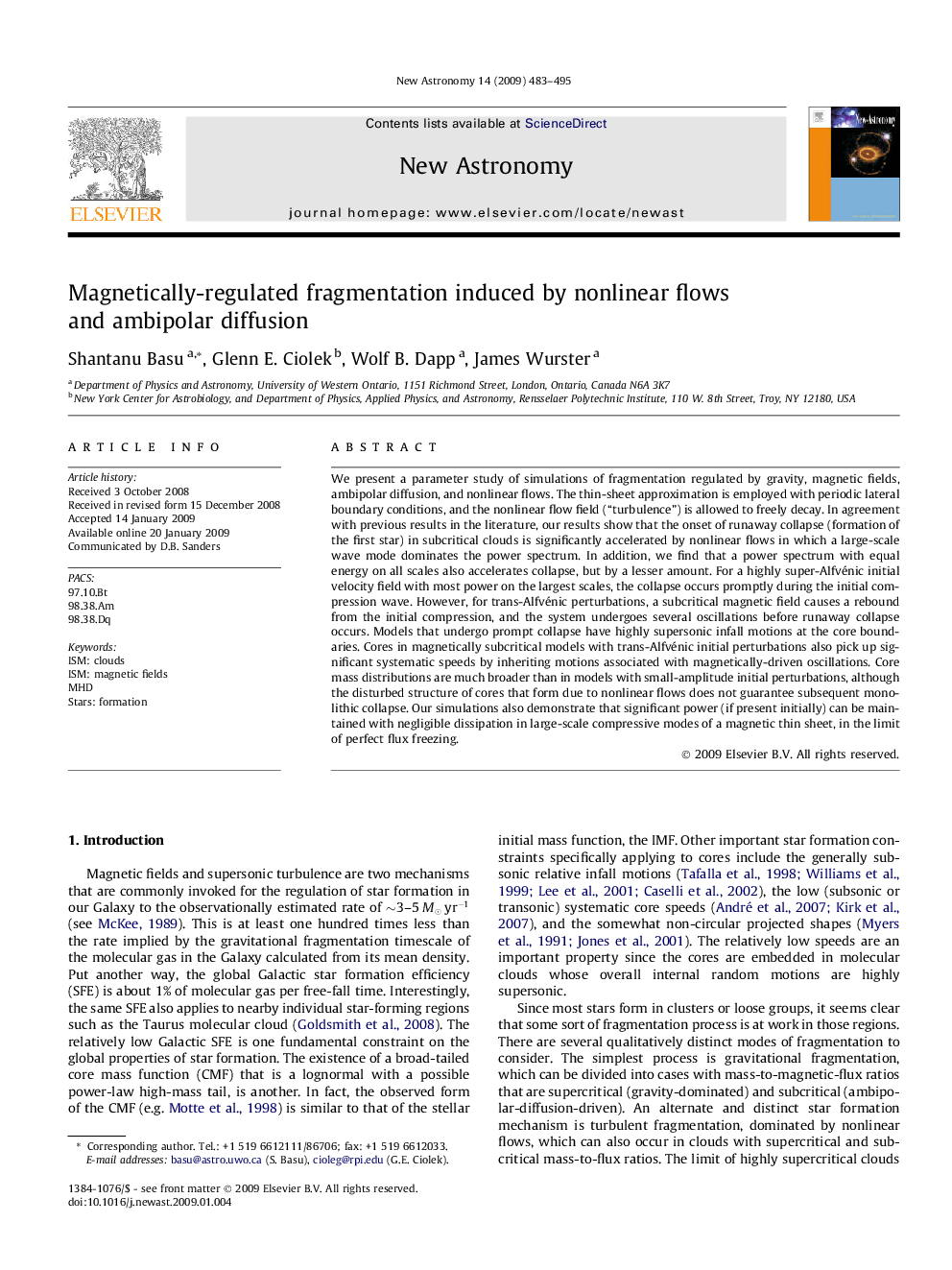| Article ID | Journal | Published Year | Pages | File Type |
|---|---|---|---|---|
| 1779594 | New Astronomy | 2009 | 13 Pages |
Abstract
We present a parameter study of simulations of fragmentation regulated by gravity, magnetic fields, ambipolar diffusion, and nonlinear flows. The thin-sheet approximation is employed with periodic lateral boundary conditions, and the nonlinear flow field (“turbulence”) is allowed to freely decay. In agreement with previous results in the literature, our results show that the onset of runaway collapse (formation of the first star) in subcritical clouds is significantly accelerated by nonlinear flows in which a large-scale wave mode dominates the power spectrum. In addition, we find that a power spectrum with equal energy on all scales also accelerates collapse, but by a lesser amount. For a highly super-Alfvénic initial velocity field with most power on the largest scales, the collapse occurs promptly during the initial compression wave. However, for trans-Alfvénic perturbations, a subcritical magnetic field causes a rebound from the initial compression, and the system undergoes several oscillations before runaway collapse occurs. Models that undergo prompt collapse have highly supersonic infall motions at the core boundaries. Cores in magnetically subcritical models with trans-Alfvénic initial perturbations also pick up significant systematic speeds by inheriting motions associated with magnetically-driven oscillations. Core mass distributions are much broader than in models with small-amplitude initial perturbations, although the disturbed structure of cores that form due to nonlinear flows does not guarantee subsequent monolithic collapse. Our simulations also demonstrate that significant power (if present initially) can be maintained with negligible dissipation in large-scale compressive modes of a magnetic thin sheet, in the limit of perfect flux freezing.
Related Topics
Physical Sciences and Engineering
Physics and Astronomy
Astronomy and Astrophysics
Authors
Shantanu Basu, Glenn E. Ciolek, Wolf B. Dapp, James Wurster,
